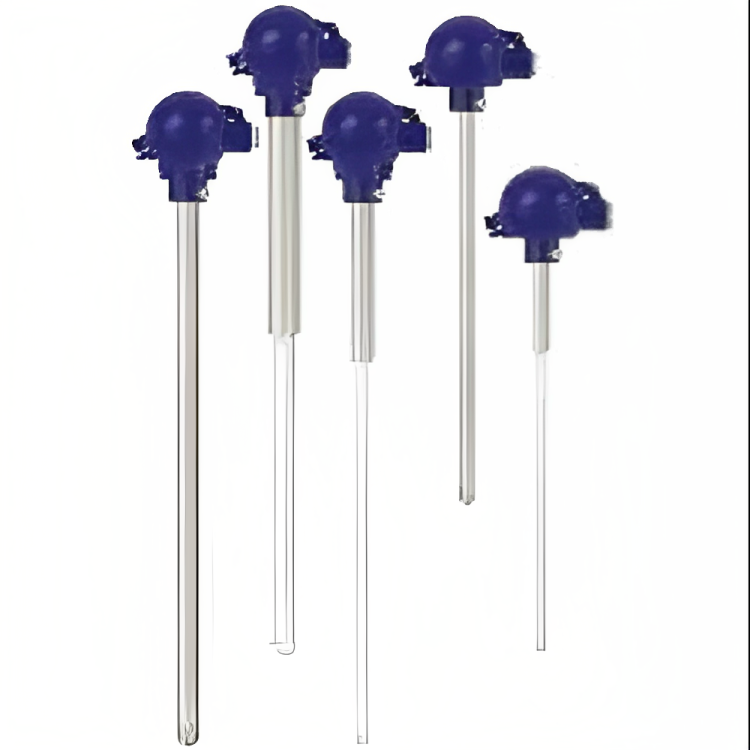Introduction
In this blog post we will discuss High Temperature Thermocouple Sensors.
We all know how important accuracy and reliability are when it comes to temperature measurement, especially when it comes to extreme heat.
That’s why we’ve come up with a new type of thermocouple sensor called a high temperature thermocouple sensor. These sensors are perfect for industries that need to keep an eye on their temperature in tough conditions.
They’re used in industrial processes, scientific research, and more. But what are they and why are they so important? Let’s find out what they mean, what their working principles are, what they’re used for, and why they’re so beneficial.

Understanding High Temperature Thermocouple Sensors/ Temperature sensors
These Temperature sensors are specialized equipment designed to provide precise temperature measurements in ultra-high-temperature environments. These sensors utilize the principle of Seebeck’s principle, this principle states that two different metals joined at one end produce an electromotive force (EMF) proportional to the difference in temperature between the two junctions.
“The EMF is then converted into a temperature value at the hot junction and is used to provide real-time information on the heat intensity of the environment.“
Working Principles
The sensor is composed of two metal alloys
The selection of metal alloys is very important in order to achieve high temperature range performance. For example, Type K (chromium-allium) thermocouple (chromel-alumel) is very reliable in temperature range from -200ºC to 1350ºC, making it suitable for a variety of industrial applications.
When a thermocouple is exposed to high temperature, it creates a voltage potential at the hot junction. The voltage potential is proportional to the difference between the temperature at the hot junctions and the temperature at the reference junctions.
By measuring the voltage at the hot junction, you can obtain accurate temperature readings. This allows you to precisely control and monitor processes even under the most extreme conditions.

Applications of High Temperature Thermocouple Sensors
These sensors are highly versatile and reliable, making them essential in a broad range of industries.
1. **Metallurgy and Metal Processing**: In high-temperature industries, such as steel production and foundry processes, where temperatures can reach temperatures of up to 1,000°C, high-performance thermocouple sensors provide accurate monitoring of heating, cooling and alloying operations.
2. **Petrochemical and Refining**: If you work in an oil refinery or chemical plant, you need to be able to measure the temperature accurately to make sure your chemicals are working properly and your distillation processes are safe.
3. **Power Generation**: Thermocouples that operate at high temperatures are essential for monitoring and optimizing power generation processes, such as those in gas turbines and nuclear reactors, as well as those in coal-fired plants.
4. **Aerospace and Aviation**: These sensors are used in a variety of applications, such as jet engines and space exploration vehicles, and assist engineers in monitoring temperature variations to avoid overheating and achieve optimal performance.
5. **Research and Development**: Most scientific research involves looking at materials at really high temperatures. These sensors make it easy to run experiments that involve analyzing metals, studying how they burn, and more.
Advantages of High Temperature Thermocouple Sensors
1. **Extreme Temperature Range**: These industrial sensors can measure temperatures at temperatures within a range that would cause damage or cause inaccurate readings from other sensors.
2. **Ruggedness and Durability**: These sensors are designed to handle extreme conditions, so they’re great for situations where there’s a lot of mechanical strain, a lot of vibration, and even corrosive gases.
3. **Real-Time Monitoring**: High temperature thermocouple sensors are equipped with high response times, providing real-time temperature information, allowing for timely interventions to avoid overheating or process variations.
4. **Wide Material Compatibility**: Industrial sensors are available in a wide range of metal combinations, each suitable for a particular temperature range and application.
5. **Cost-Effective**: Compared to some alternative temperature sensing technologies, high-temperature thermocouples offer cost-effective solutions, making them a preferred choice for various industries.
Challenges and Considerations
While these sensors offer numerous benefits, they also come with challenges that should be addressed:
1. **Calibration**: Calibration is essential to maintain accuracy, especially at the high end of the temperature range. Regular calibration ensures reliable measurements.
2. **Cold Junction Compensation**: It’s important to use accurate cold junction compensation techniques to compensate for temperature differences at the cold junction to get accurate readings.
3. **Linearity and Accuracy**: Because thermocouple voltage and temperature relationships are non-linear, it can be difficult to guarantee accuracy across a large temperature range.
4. **Electromagnetic Interference**: In high-temperature environments, electromagnetic interference may introduce in the measurements, so it’s important to make sure you have the right shielding and grounding in place.
Conclusion
These temperature sensors are the best of the best when it comes to accuracy and durability. They’ve been used in a lot of different industries to keep an eye on extreme temperatures, and they’ve become a key part of how we control processes, make sure quality is high, and keep safety in mind. As technology advances, high temperature thermocouples are going to be a key part in pushing the limits of what’s possible in high temperature environments, making our industries safer, faster, and more creative than ever before.
Home Page Our Facebook Page Our You Tube Channel